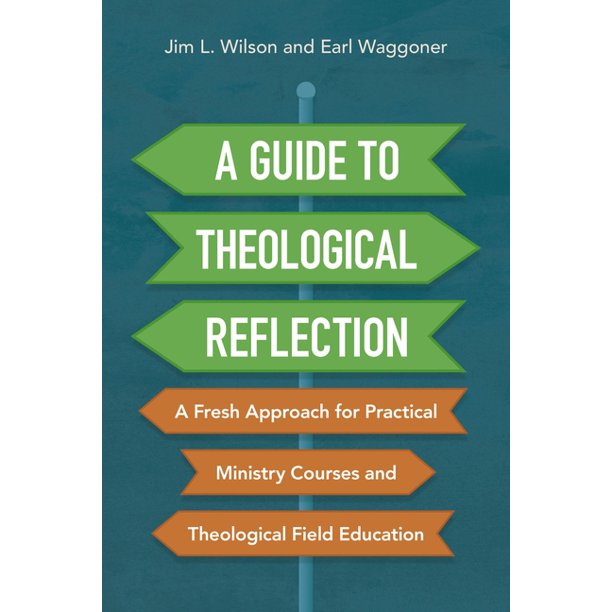A Guide to Theological Reflection: A Fresh Approach for Practical Ministry Courses and Theological Field Education

Wilson, Jim L. and Earl Waggoner. A Guide to Theological Reflection: A Fresh Approach for Practical Ministry Courses and Theological Field Education. Grand Rapids: Zondervan Academic, 2020. Softcover, 192 pp. ISBN 978-0-310-09393-0, $18.99.
This work represents the primary structure of theological reflection empoyed in the theological field education standards for Gateway Seminary. There, Jim L. Wilson serves as Professor of Leadership Formation and Director of the Doctor of Ministry program. Prior to Earl Waggoner’s role as Dean of Biblical Studies and Theology of the College of Adult & Graduate studies at Colorado Christian University, he also served at Golden Gate Seminary.
The stated intent of their book is to act as a “guide for students and ministers […] introducing [them] to effective, transformative theological reflection” (p. 16) as influenced by ATS standards for the sake of “informing ministry practice” (p. 17). The authors note that their approach to theological reflection is strictly applied to the practice of ministry and not to the whole of Christian life. Contemporary trends demonstrate that seminary students, however, are applying their earned degrees toward roles outside of the local church. The somewhat “insider” language employed by Wilson and Waggoner may inadvertently exclude readers who work in diverse ministry contexts and roles.
Divided into two sections, the first part of the book establishes the need for and definition of theological reflection. This includes a useful exploration of differing models of theological reflection compared to their own proposed method: “the reflection loop” (p. 43). The loop itself includes three primary tasks: “identifying how our beliefs, thoughts, and feelings influence our actions, aligning them to our best understanding of God’s truth, and exploring possibilities for future ministry responses” (p. 43). The cycle implies an ongoing, reflective learning process brought about by prior ministry experiences and realized in the minister’s active follow through. Following this model, the authors suggest a wealth of helpful questions to guide the ongoing momentum behind the reflective process. The desired outcome of the reflection loop clarifies the essential role theological reflection plays in character formation: “to close the gap between what we say we believe and how we live” (p. 44).
The second section of their work explores subsidiary tools involved in the reflective process. These include communal learning and ministry support teams as well as journaling and ministry artifacts, among others. The bulk of the Guide is spent in this section providing helpful outlines and examples of each tool. Taken all together, the myriad of tasks would make for a substantial investment of time and energy suitable for students, but likely beyond what is available to readers in current full-time ministry positions. While the detailed engagement is designed to enhance a ministerial leader’s success, more space could have been dedicated toward how the minister integrates elements of theological reflection into his or her lifestyle in such a way as to benefit strategies for life-long learning.
Considering its intended purpose, Wilson and Waggoner’s work is a winsome and effective tool that elevates the efficacy of theological reflection in the institution. They give important space to discuss the motivations and beliefs at play in ministry leaders themselves while balancing this with helpful practices and considerations for the very real complexities of Christian ministry. As they do so, the authors present a handful of practical tools to enhance theological reflection while remaining rooted in submission to the process of character formation; effectively modeling the imaginative work they beg of their own readers.
The Guide does present the task of theological reflection within a defined set of institutionalized practices and expectations of the Baptist theological tradition. It therefore lends itself to be less of an accessible work on theological reflection generally, becoming less helpful to readers in parachurch ministries or to the task of Christian formation as a whole. Moreover, the work demonstrates a lack of women’s theological voices further distancing itself from current institutional trends. Still, the book is well suited to support institutions and programs seeking to systematize their field training, residencies and formative programming efforts. I have also recommended it as a helpful resource to my students who are seeking additional tools to diversify their formative process.
Nathan Scherrer, MA
Professor of Training and Mentoring
Denver Seminary
February 2021
